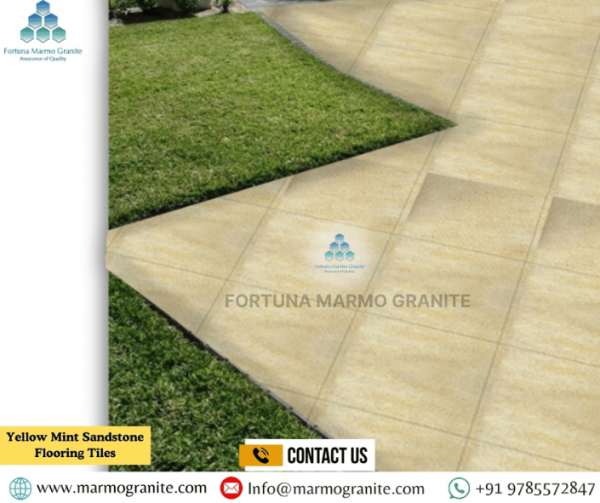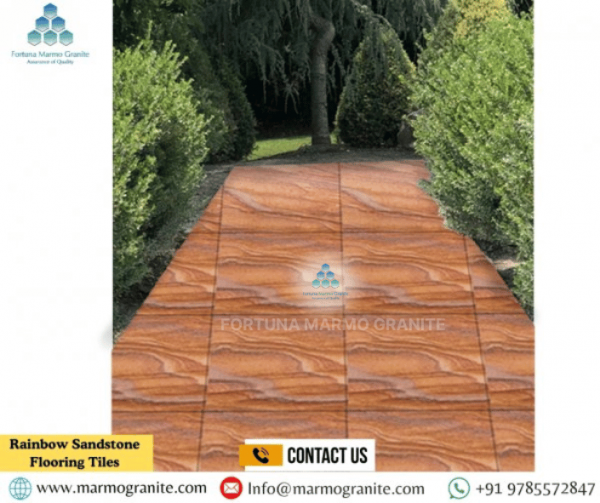Natural Sandstone Pathway Tiles: A Timeless Solution for Your Garden
Natural Sandstone Pathway Tiles Supplier Creating a garden that radiates beauty, character, and functionality begins with thoughtfully planned pathways that invite exploration and connect different areas of your outdoor space. These paths serve more than just a practical purpose—they shape the entire aesthetic and experience of the garden. Whether winding gently through flower beds or forming a straight route to a patio or gazebo, a well-designed pathway offers a sense of direction, order, and charm. Among the wide range of paving materials available today, natural sandstone pathway tiles emerge as one of the most favored options due to their unmatched visual appeal and dependable performance. With earthy hues ranging from golden beige and soft pink to rustic browns and greys, sandstone tiles add an organic and timeless touch to any garden setting.
Beyond their aesthetic allure, sandstone tiles are known for their durability and slip resistance, making them a safe and long-lasting choice for outdoor environments exposed to the elements. Moreover, sandstone is relatively easy to work with and can be cut into various sizes and shapes, allowing for creative freedom in designing both traditional and contemporary garden pathways. In this comprehensive guide, we delve into the many reasons why natural sandstone pathway tiles are an ideal solution for enhancing your garden. We'll cover the material's benefits, explore versatile design ideas, share essential installation techniques, and offer expert maintenance advice to help you preserve the natural elegance of your sandstone walkways for years to come.
Why Choose Natural Sandstone for Garden Pathways?
- Aesthetic Appeal
Moreover, Sandstone offers a natural, earthy look that enhances the organic beauty of your garden. Available in a wide range of colors such as beige, buff, grey, red, and mint, it complements both traditional and contemporary landscaping themes. The subtle textures and tonal variations of sandstone tiles create a visually interesting path without overwhelming the garden's natural elements.
- Durability and Longevity
In addition, Sandstone is formed through the compression of sand over centuries, making it incredibly durable and weather-resistant. It can withstand heavy foot traffic, harsh weather conditions, and temperature fluctuations, making it ideal for outdoor use. Yet, With proper care, sandstone pathway tiles can last for decades without losing their charm.
- Slip Resistance
Consequently, Natural sandstone generally has a slightly rough surface, providing excellent traction even when wet. This makes it a safe option for pathways, especially in gardens where moisture and dew are common. Anti-slip finishes can also be applied for added safety.
- Eco-Friendly and Sustainable
For instance, Being a naturally occurring material, sandstone is eco-friendly and sustainable. It requires less energy to produce compared to concrete or synthetic materials, and its longevity reduces the need for frequent replacements, lowering your environmental footprint.
Design Ideas for Sandstone Garden Pathways
- Classic Straight Pathway
Moreover, A straight path made of uniformly cut sandstone tiles creates a formal, clean look. This is perfect for symmetrical garden designs and entrances leading directly to your home or patio.
- Curved or Meandering Path
In addition, Curved pathways with irregular-shaped sandstone tiles evoke a more natural, organic feel. This design works well in cottage gardens, woodlands, or informal settings.
- Stepping Stones Look
Yet, Instead of full tiling, use large sandstone slabs spaced out with gravel or grass in between. This stepping-stone layout is cost-effective and allows greenery to grow around the tiles, enhancing the natural feel.
- Mixed-Pattern Layouts
Consequently, You can mix and match different sizes and shades of sandstone tiles to create mosaic or patterned pathways. These layouts add a layer of artistry and uniqueness to your garden.
Types of Sandstone Finishes for Pathways
- Natural Split (Riven) Finish
Moreover, This is the most popular choice for outdoor pathways. The riven finish maintains the natural texture of sandstone, providing grip and a rustic look.
- Honed Finish
In addition, A honed finish offers a smooth, matte surface. While it gives a refined appearance, it may be less slip-resistant unless treated with anti-skid coatings.
- Brushed or Tumbled Finish
Yet, These finishes offer an aged or weathered look that's ideal for vintage garden designs. Brushed surfaces are soft underfoot but still provide enough traction.
- Sandblasted Finish
In contrast, Sandblasting gives sandstone a grainy texture and slightly faded look. It increases slip resistance and works well in high-moisture areas.
Installation Tips for Sandstone Pathways
- Planning and Layout
Mark the pathway's course and measure the total area to determine the quantity of sandstone tiles needed. Decide on tile size, layout pattern, and finish ahead of time.
- Preparing the Base
Excavate the area to the desired depth and lay a compacted sub-base of gravel or crushed stone. This layer provides drainage and support for the tiles.
- Mortar or Dry Installation
For a permanent path, use a mortar bed to set the tiles securely. Alternatively, a dry-lay installation with compacted sand is a flexible, easier option for lighter foot traffic.
- Grouting and Jointing
Use suitable grout or jointing compounds to fill gaps between tiles. For a more rustic look, you can also use sand or gravel. Make sure the joints are sealed properly to prevent weed growth.
Maintenance of Sandstone Pathway Tiles
- Regular Cleaning
Sweep the path regularly to remove debris, leaves, and dirt. Use a mild detergent with warm water for occasional scrubbing. Avoid harsh chemicals that can damage the stone.
- Moss and Algae Control
Shady, moist areas may develop moss or algae. Treat these spots with eco-friendly moss removers or vinegar-based solutions. Ensure adequate drainage to reduce moisture buildup.
- Re-Sealing
Reapply sealer every 2–3 years depending on usage and exposure. This maintains the tile's protection and preserves its natural beauty.
- Repairing Damaged Tiles
Cracked or loosened tiles should be replaced promptly to prevent further damage. Luckily, individual sandstone tiles can be lifted and replaced without disturbing the entire path.
Cost Considerations
The cost of sandstone tiles varies based on quality, size, finish, and origin. However, it generally remains a cost-effective choice compared to premium stone options like granite or marble.
Key Cost Factors Include:
- Tile size and thickness: Thicker tiles are more durable but slightly more expensive.
- Finish and treatment: Special finishes or pre-sealed tiles come at a premium.
- Installation method: Professional installation adds to the cost but ensures longevity.
- Maintenance products: Sealers, cleaners, and tools for upkeep should also be considered.
Environmental and Design Harmony
Moreover, One of the strongest advantages of using sandstone is its seamless integration with the natural environment. Its earth-toned colors and irregular textures mimic the terrain, allowing it to blend effortlessly with lawns, flower beds, and other landscaping elements. Unlike concrete or synthetic materials, sandstone ages gracefully, acquiring a natural patina over time that adds to its character.
Moreover, sandstone paths create a sensory journey through your garden. The sound of footsteps on stone, the feel of textured tiles underfoot, and the visual rhythm of a winding path all contribute to a multi-sensory experience that deepens your connection with the space.
Conclusion
Indian Sandstones Suplier Natural sandstone pathway tiles are more than just a practical landscaping choice—they are a statement of timeless elegance and a testament to the beauty of nature. Their warm, earthy tones and rich textures blend seamlessly into any outdoor setting, enhancing the aesthetic appeal of gardens, courtyards, and walkways with an inviting and organic charm. Resistant to weathering, durable underfoot, and naturally slip-resistant, sandstone tiles offer a perfect combination of form and function that few other materials can match. In contrast, Whether you're crafting a rustic garden trail, a formal walkway, or a winding path through lush greenery, sandstone adds character, structure, and visual interest that improves with age. By choosing sandstone, homeowners and landscape designers alike invest in a solution that not only elevates the look of their outdoor spaces but also supports sustainability through the use of natural stone.
Moreover, At Fortuna Marmo Granite, we take pride in offering premium quality natural sandstone tiles that are meticulously sourced and expertly finished to meet your design vision. With our wide selection, reliable service, and deep industry knowledge, we're here to help you transform your garden into a timeless sanctuary where every step tells a story of nature, craftsmanship, and enduring beauty.




